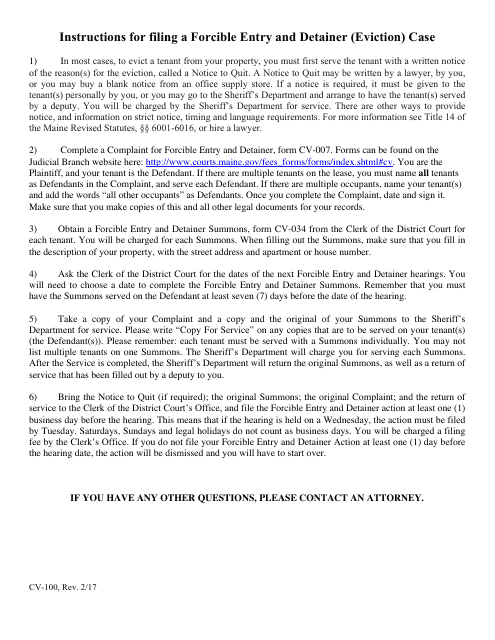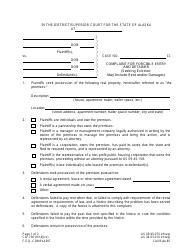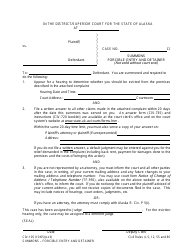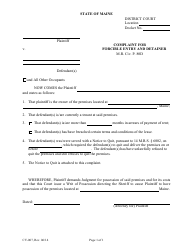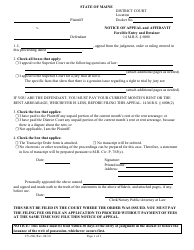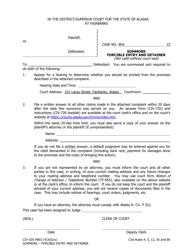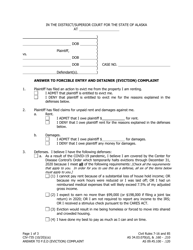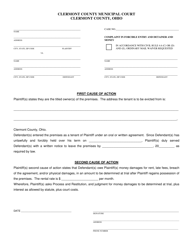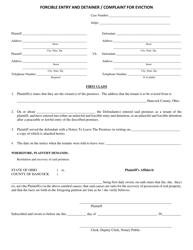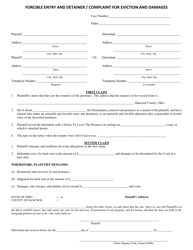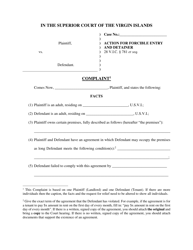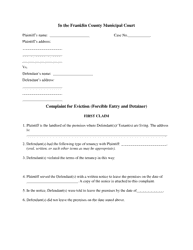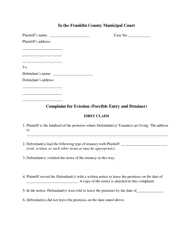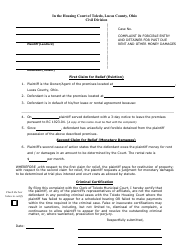Instructions for Forcible Entry and Detainer (Eviction) Case - Maine
This document was released by State of Maine Judicial Branch and contains the most recent official instructions for Forcible Entry and Detainer (Eviction) Case .
FAQ
Q: What is a Forcible Entry and Detainer case?
A: A Forcible Entry and Detainer case, also known as an eviction case, is a legal process used by landlords to remove tenants who have violated the terms of their lease or rental agreement.
Q: How can a landlord start a Forcible Entry and Detainer case in Maine?
A: A landlord can start a Forcible Entry and Detainer case in Maine by filing a complaint with the appropriate court.
Q: What information should be included in the complaint for a Forcible Entry and Detainer case?
A: The complaint for a Forcible Entry and Detainer case in Maine should include the names of the landlord and tenant, the address of the rental property, and the reason for the eviction.
Q: What happens after the complaint is filed?
A: After the complaint is filed, the court will issue a summons to the tenant, notifying them of the eviction case and the date of the hearing.
Q: What happens if the tenant fails to respond to the eviction case?
A: If the tenant fails to respond to the eviction case, the court may enter a default judgment in favor of the landlord, allowing them to proceed with the eviction.
Q: Can a tenant file a counterclaim in a Forcible Entry and Detainer case?
A: Yes, a tenant can file a counterclaim in a Forcible Entry and Detainer case, asserting any legal defenses or claims they may have against the landlord.
Q: What happens at the hearing for a Forcible Entry and Detainer case?
A: At the hearing, both the landlord and tenant will have the opportunity to present their cases and any evidence supporting their claims.
Q: What happens if the court rules in favor of the landlord in a Forcible Entry and Detainer case?
A: If the court rules in favor of the landlord, they may be granted a judgment of possession, allowing them to legally remove the tenant from the rental property.
Q: What is the process for removing a tenant after obtaining a judgment of possession?
A: After obtaining a judgment of possession, the landlord must typically provide the tenant with a notice to vacate and then, if necessary, request assistance from law enforcement to physically remove the tenant.
Q: Can a landlord seek monetary damages in a Forcible Entry and Detainer case?
A: Yes, a landlord can seek monetary damages, such as unpaid rent or property damage, in addition to eviction in a Forcible Entry and Detainer case.
Instruction Details:
- This 1-page document is available for download in PDF;
- Actual and applicable for the current year;
- Complete, printable, and free.
Download your copy of the instructions by clicking the link below or browse hundreds of other forms in our library legal documents released by the State of Maine Judicial Branch.
